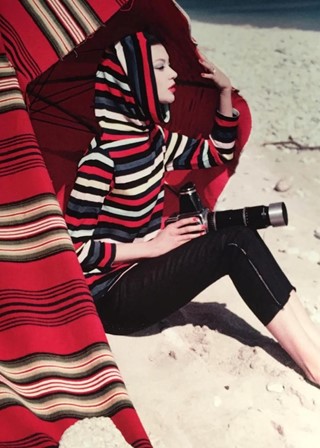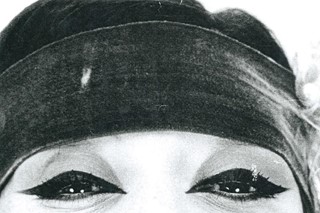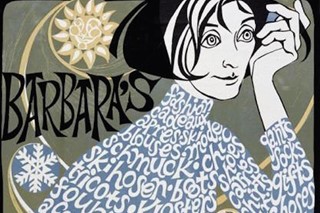As a new campaign to create a book about her life launches online, John-Michael O'Sullivan reflects on the magic of Barbara Mullen
Once upon a time, somebody stopped a lanky teenager on a sidewalk in Brooklyn, and said: “You should be a model”. These days, that’s pretty much your average rags-to-runway discovery story. In 1945, though – pre-Funny Face, pre-Twiggy and Jean Shrimpton, pre-America’s Next Top Model, pre-Kate Moss getting spotted at a JFW check-in – little girls didn’t grow up dreaming of becoming fashion models. But Barbara Mullen decided to give it a go anyway, kick-starting a career that would span two decades, and that would see her become one of the most successful cover girls of her day.
Beginning as a store mannequin at Bergdorfs, she would become a favourite of photographers as diverse as Lillian Bassman, Dick Avedon, Toni Frissell and William Klein, thanks to an instinct for movement and an ability to transform which made her the industry’s first great chameleon – an off-kilter, irregular beauty, like Erin O’Connor or Kristen McMenamy decades later, who could shift from ingenue to vamp to girl-next-door to couture grande dame. She finally retired mid-60s (but not before opening Emanuel Ungaro’s first show), and went on to open Barbara’s Bazar, a much-loved fashion boutique that championed new designers like Sonia Rykiel and Kenzo.
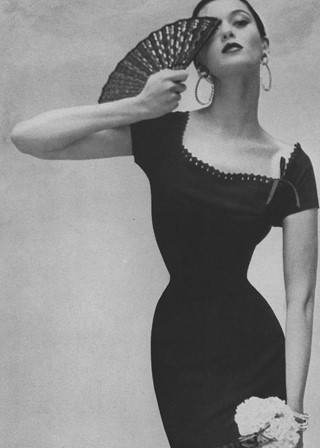
One of the last survivors of a trailblazing generation, Mullen is now 90 years old. She’s an extraordinary character who’s lived a fascinating life both on and off camera. It seemed blindingly obvious, when I first met her that her story deserved to be told. Every editor we pitched the story to loved it – but then, time after time, turned it down. “Publishers are less and less inclined to take risks on books that appeal to a more niche fashion audience,” one agent admitted, “though we all know that audience loves gorgeous books, and there are more and more outlets willing to stock them. It can be very frustrating when we all know there’s a story to tell, and a market and readership hungry for a book such as this.”
There are, quite literally, hundreds of books about fashion models (699 at last count, according to Amazon). But when you deduct the bonkbusters, the teen romances, the paper doll books, the 90s lads’ mags and the endless how-to-make-it guides, there’s surprisingly little to tell the story of a century-old profession which evolved hand-in-hand with the fashion industry itself, and which has shaped that industry’s aesthetic in every way imaginable. That’s not to say that there aren’t remarkable exceptions, from Dorian Leigh’s rip-roaring The Fire And Ice Girl to Christopher Niquet’s recent Models Matter – but they’re the exceptions, by and large, that prove the rule. Take Liz Gibbons, one of the stars of Irving Penn’s iconic Twelve Beauties image; she wrote a funny, disarmingly frank memoir of life as a 1930s top model which has languished unpublished for decades. These days, thanks to social media, models are finally starting to create and direct their own narratives. It seems a terrible shame, though, that we’ve let decades worth of history slip through our fingers, happy to let cursory Wikipedia pages serve as model epitaphs for women as talented, interesting and diverse as Sunny Harnett, Bani Yelverton, Theo Graham, Tedi Thurman, Muriel Maxwell, Ivy Nicholson and all the rest.
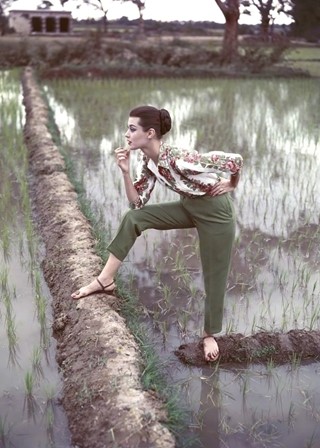
After four years of knock-backs, I’d more or less given up on the idea. But then, unexpectedly, Barbara Mullen became a cover girl again. One of Lillian Bassman’s most famous pictures of her, wearing a plume of Dior ruffles, was selected for the cover of Harper’s Bazaar’s 150th anniversary book, and projected onto the Empire State building one night in April. It seemed insane, at that moment, that someone could be important enough to have their image cover an entire skyscraper – and yet not be worthy of having their story told. So, in partnership with crowdfunding platform Unbound, we decided to launch a campaign to publish Barbara’s biography.
On Instagram, whilst the campaign runs, we’re publishing an image a day by one of the photogaphers Mullen worked with, from Slim Aarons all the way to Henry Wolf, to illustrate her extraordinarily diverse career. And in parallel, on the book’s homepage, we’re beginning to share the stories of some of the other women who’ve slipped through history’s net; women every bit as deserving of having their lives recorded as Barbara Mullen is – in words, as well as in pictures.
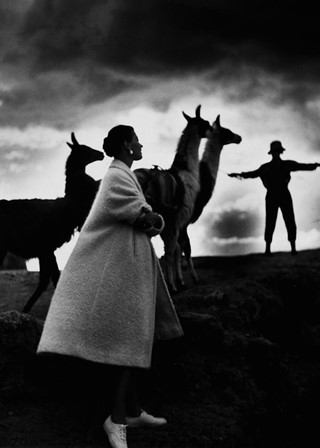
To support The Replacement Girl: A Life in 24 Frames, by John-Michael O’Sullivan, head to Unbound.
